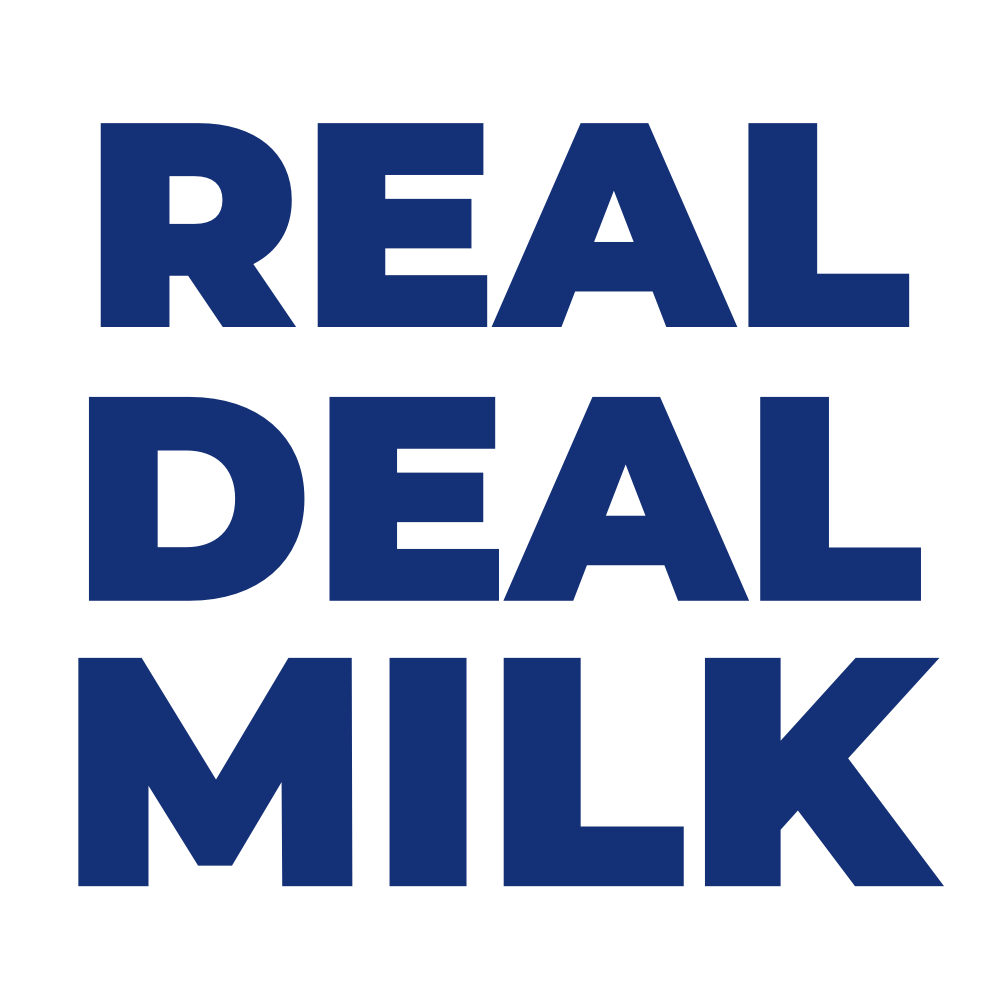A day in the life of a dairy cow
Ever taken a moment to think, what's life like for a cow?
The life of a cow could be so peaceful, roaming the great outdoors, grazing thick pastures and napping in the afternoon sun. But if you're a born on a mass dairy farm, the outcome couldn't look more different. There will be painfully uncomfortable housing conditions, unpleasant illness, and, to finish off, an early death.
A farm's conditions vary dramatically, based not only on where the farm is found but also on the number of cattle and how closely they stick to the recommended guidelines. So no one picture demonstrates where your morning glass of milk started its journey. Still, as a report on the "welfare of EU dairy cows" (European Commission. 2017) indicated that cows in Europe suffer from severe health and welfare problems, it's unlikely to be a pretty picture.
What’s the housing like?
There’s certainly no luxury.
Where a cow passes most of its days depends on the farm. They may be lucky enough to spend most of the time outdoors with space to wander, or they may be unlucky enough to be cramped up in a cubicle (European Commission. 2017). The most unfortunate cows will have absolutely no opportunity to move, ensured by tying them into one place with a chain or strap. Hence, standing or sitting are their only options; imagine the discomfort of not even being able to turn around or walk a few steps.
The living conditions can be dramatically different depending on their location. In Ireland, around 98% of cows are out grazing. This percentage reduces to 10% in Greece and it’s nearly non-existent in Bulgaria (European Commission. 2017). Whilst cramped living spaces are bad, horror story conditions open our eyes to the worst-case scenarios. A whistleblower in Northern California uncovered a dairy farm that was forcing the cows to eat, sleep and live knee-deep in their own waste (PETA. b), shockingly cruel and thankfully now closed down.
Illness on the farm
With poor living conditions comes poor health.
Lameness commonly arises in the cattle community, and unsurprisingly so. It is caused by conditions associated with bacterial infections, such as spending long periods standing on a concrete floor or other poor flooring conditions (RSPCA). As a result, cows that are lame will experience pain and discomfort, resulting in a lower milk yield and thus an earlier expiry date on their life (UFAW).
Mastitis is also very common on a dairy farm, sometimes affecting up to 70% of a herd (RSPCA). It is a bacterial infection, so it usually stems from milking systems of the environment, such as contaminated bedding (RSPCA). The disease causes a cow's udder to become inflamed, a painful and unpleasant experience affecting many cows (The Cattle Site).
What's on the menu?
It should be grass.
A cow living its own life would be dining on grass and throwing in some other types of vegetation, constituting a diet packed full of fibre. But dairy cows aren't in charge of their meal plans. Some cows land the chance of grazing grass in the summer and moving over to silage for winter. However, others are trapped in zero-grazing systems, leaving them with no access to grass and more access to concentrates to supplement their diet (CIWF). They certainly don't sound appealing and can lead to acidosis, causing diarrhoea (CIWF).
Where have their horns gone?
Horns getting in the way of farming? Chop them off.
You may not have realised that dairy cows naturally have horns, because farmers have taken it upon themselves to remove them, forcefully. This is done by destroying the tissue before the horns have the chance to develop or hacking them off later on (PETA). There are no painkillers involved; the cows are forced to face the total trauma of having part of their body forcefully removed (RSPCA. 2019).
The end.
The end comes a lot sooner than most cows bargain for. By that point, they're probably just relieved it's over.
Left to their own devices, cows can live for as long as 20 years. On a dairy farm, you're looking at a lifespan of about 4 or 5 years (PETA). Once a cow loses her high milk-making efficiency, she's obsolete. So off to the slaughterhouse she goes, and out she pops as dog food or a hamburger.
In comparison to the male cows, these dairy cows' lives are looking pretty lengthy. With no udders, male cows are redundant. As we've seen with old dairy cows, if there's no use for them, to the slaughterhouse they go. So male calves are packed off to their death after only a few months of life, ready to be turned into veal (PETA).
The life of a dairy cow is bleak, monotonous and painful. And we haven't even touched on the pain of being constantly forced into pregnancy, then having your children ripped from you, which you can read about here. Drinking Real Deal Milk leaves the cows alone entirely, meaning no animal has to be put through such misery to create a drink for humans.
You can enjoy milk guilt-free, and the cows can enjoy some peace.
References
CIWF. No date. Farm animals; dairy cows. https://www.ciwf.org.uk/farm-animals/cows/dairy-cows/
European Commision. 2017. Overview report welfare of cattle on dairy farms. PDF.
PETA. No date. a. The life of a cow (infographic). https://www.peta.org/features/cows-dairy-farm-secrets/
PETA. No date. b. Cow’s milk: a cruel and unhealthy product. https://www.peta.org/issues/animals-used-for-food/animals-used-food-factsheets/cows-milk-cruel-unhealthy-product/
RSPCA. No date. Dairy cows - key welfare issues. https://www.rspca.org.uk/adviceandwelfare/farm/dairy/keyissues
The Cattle Site. No date. Mastitis. https://www.thecattlesite.com/diseaseinfo/179/mastitis/
UFAW. No date. Lameness in dairy cattle. https://www.ufaw.org.uk/why-ufaws-work-is-important/lameness



